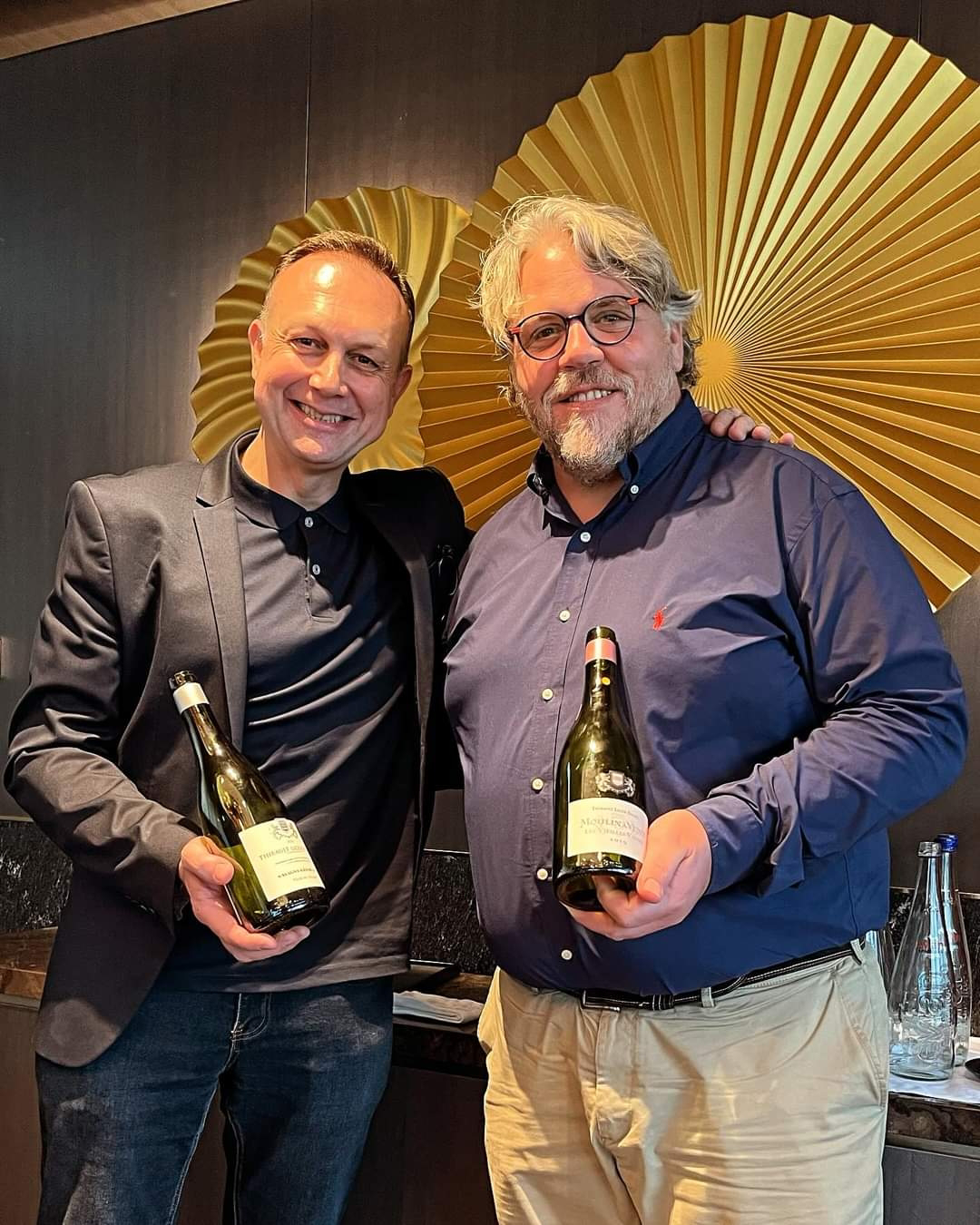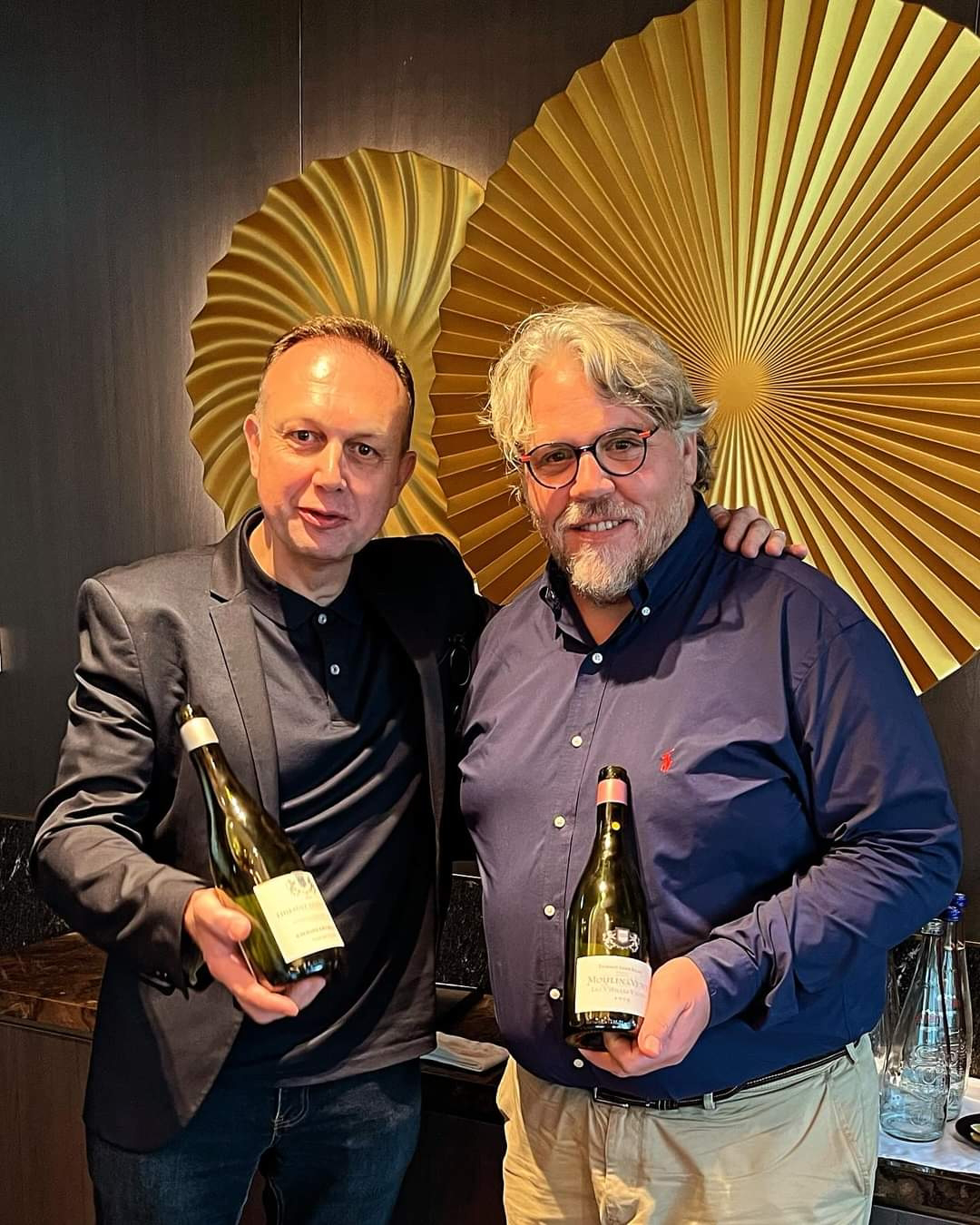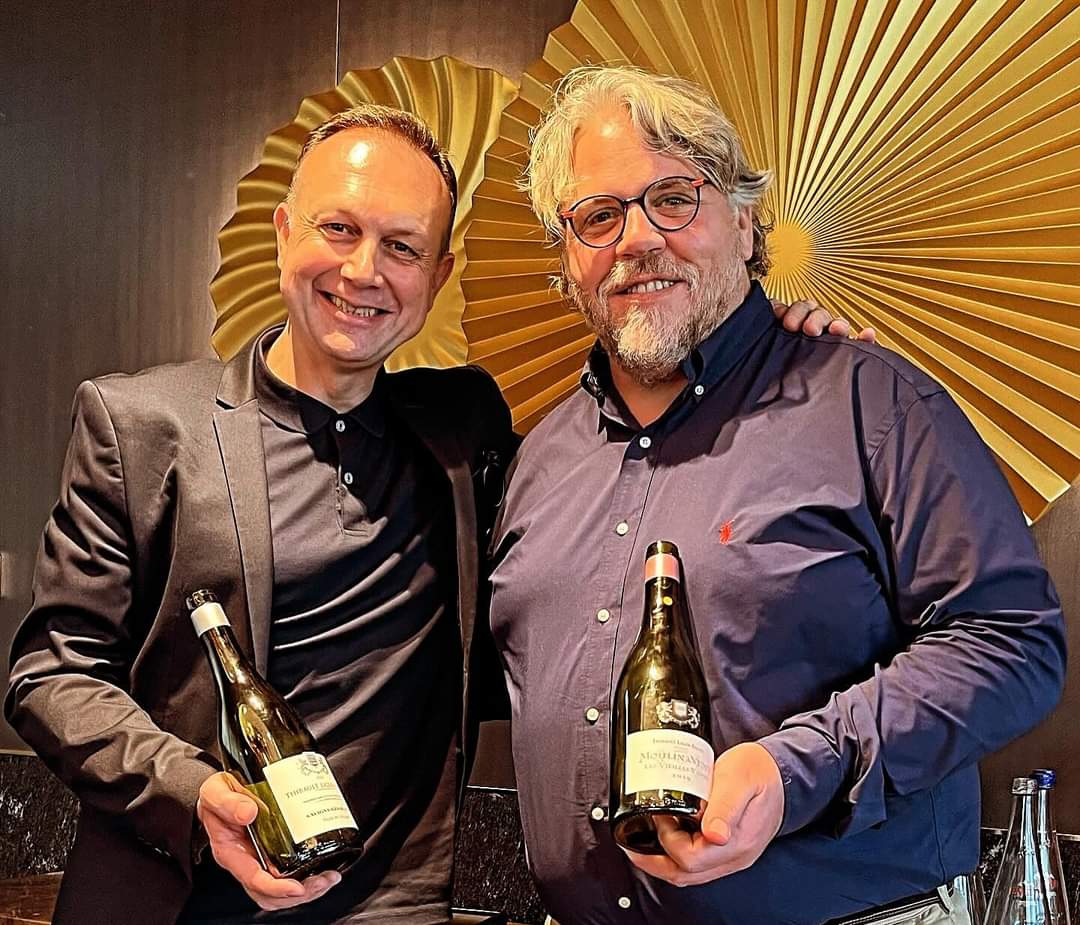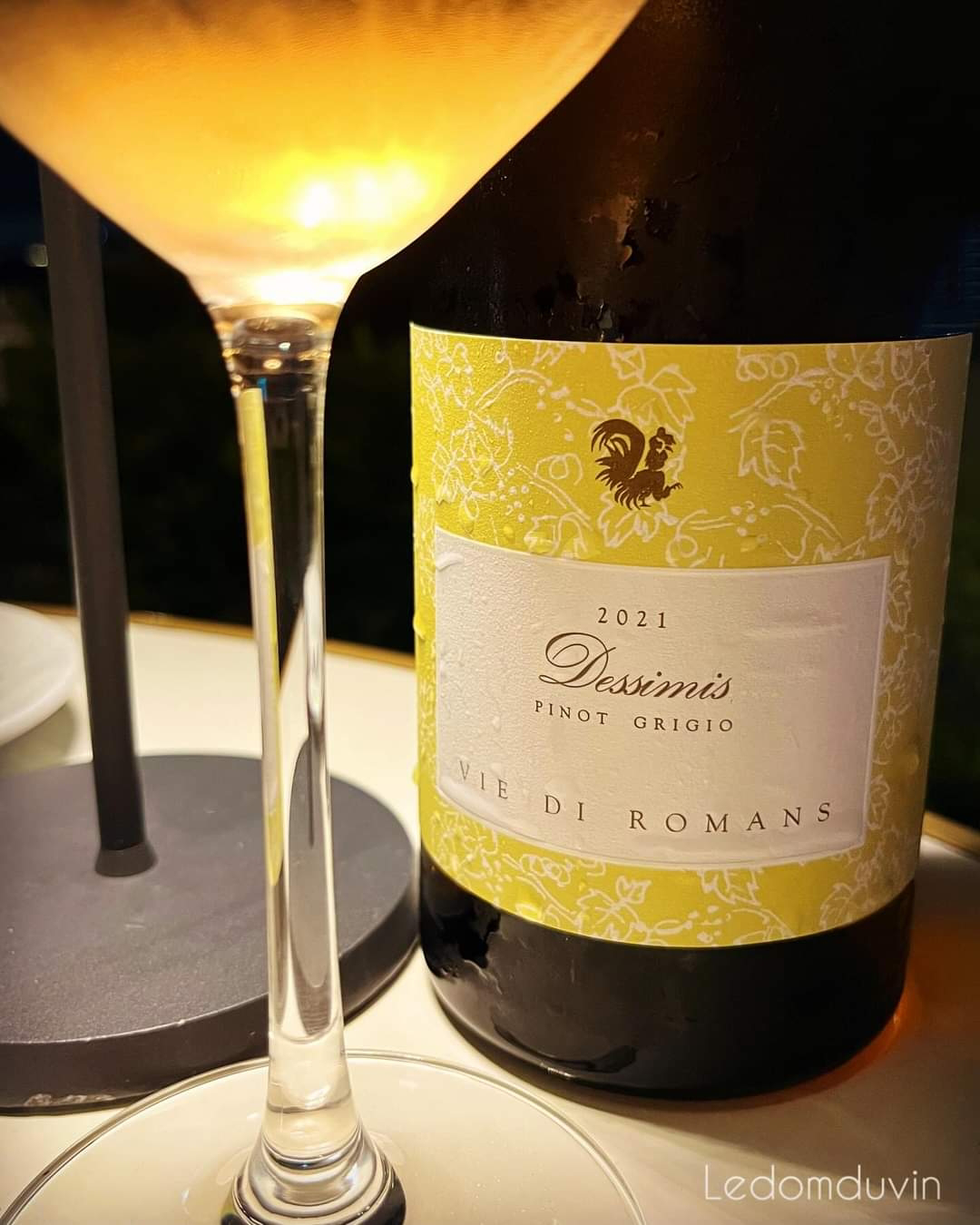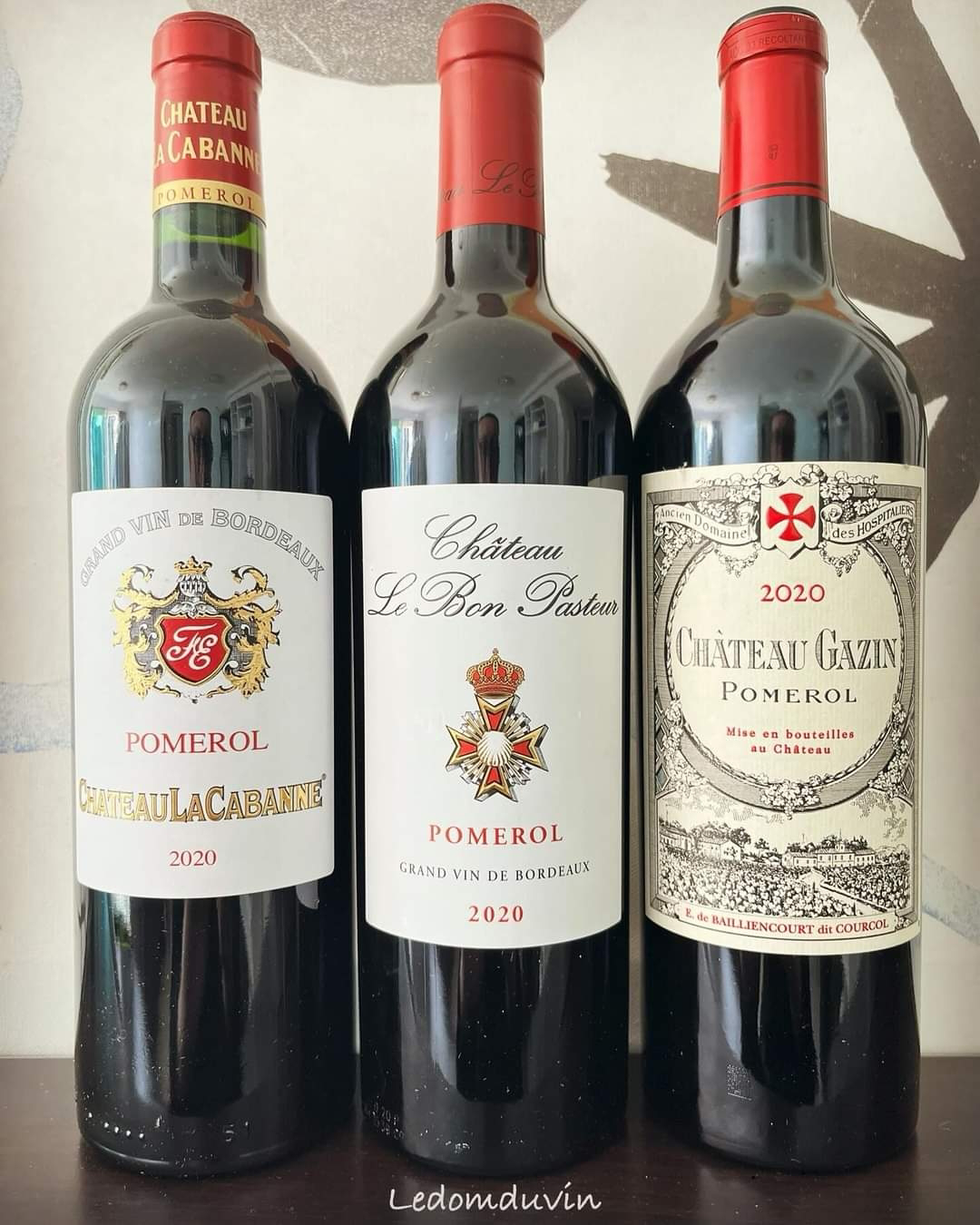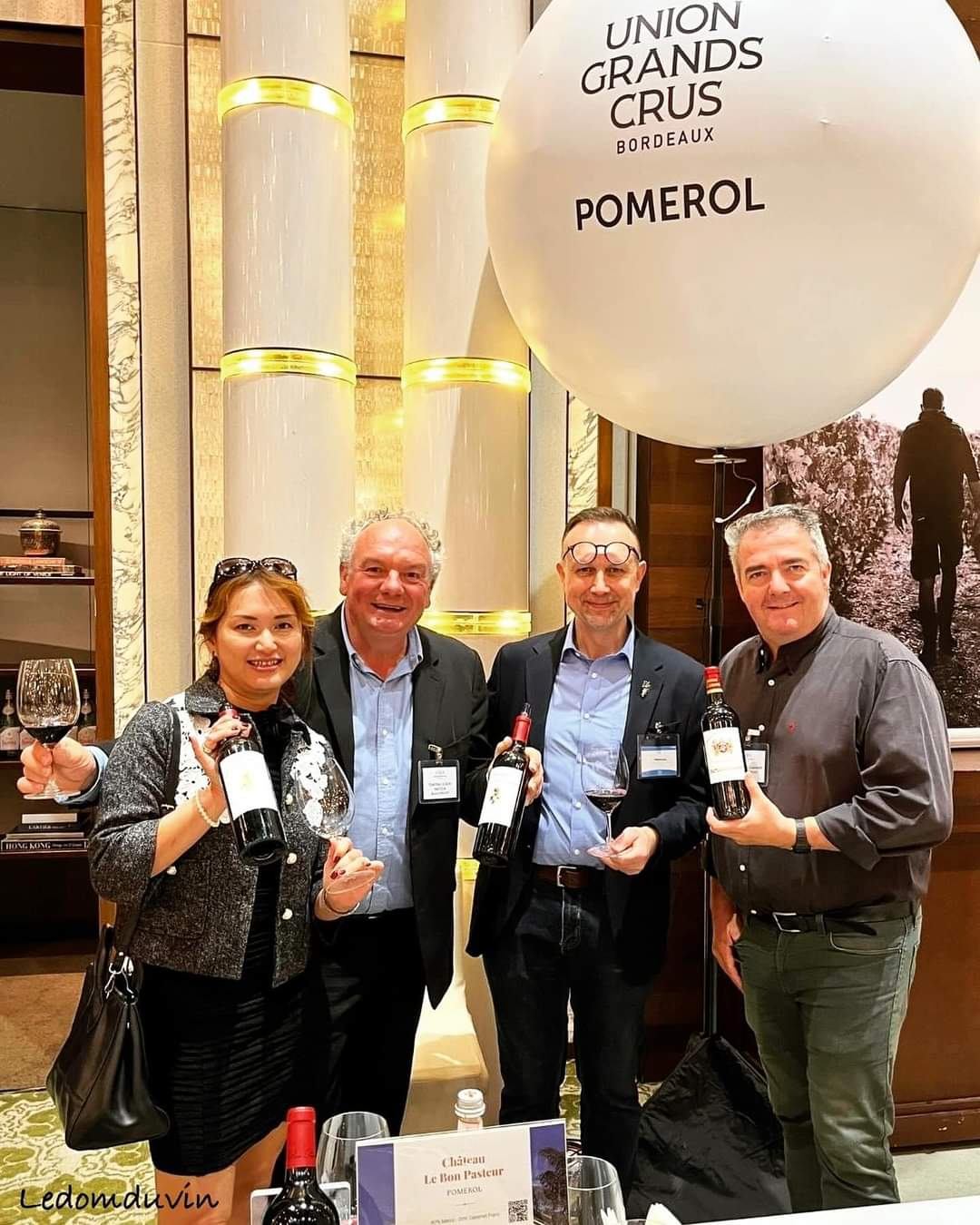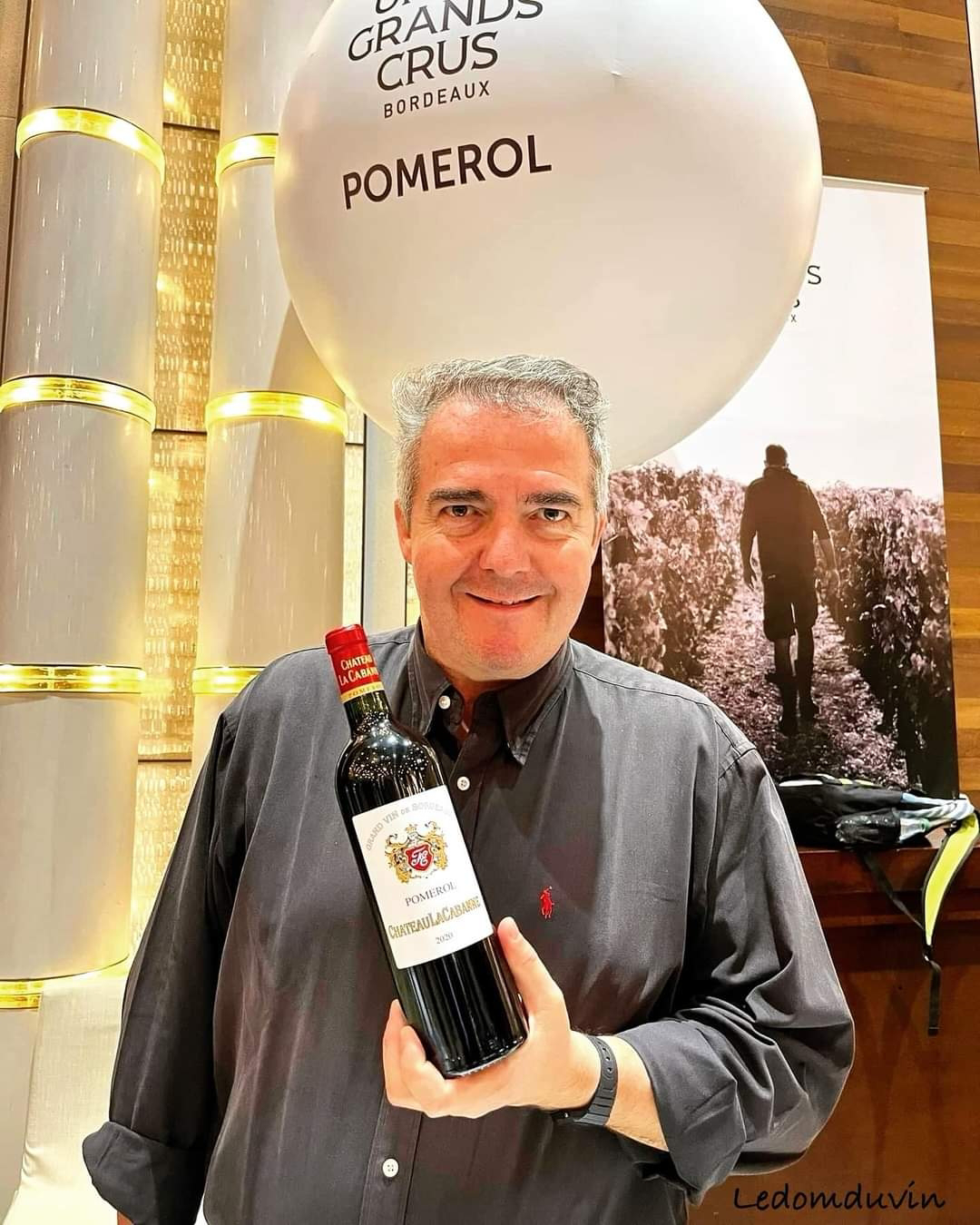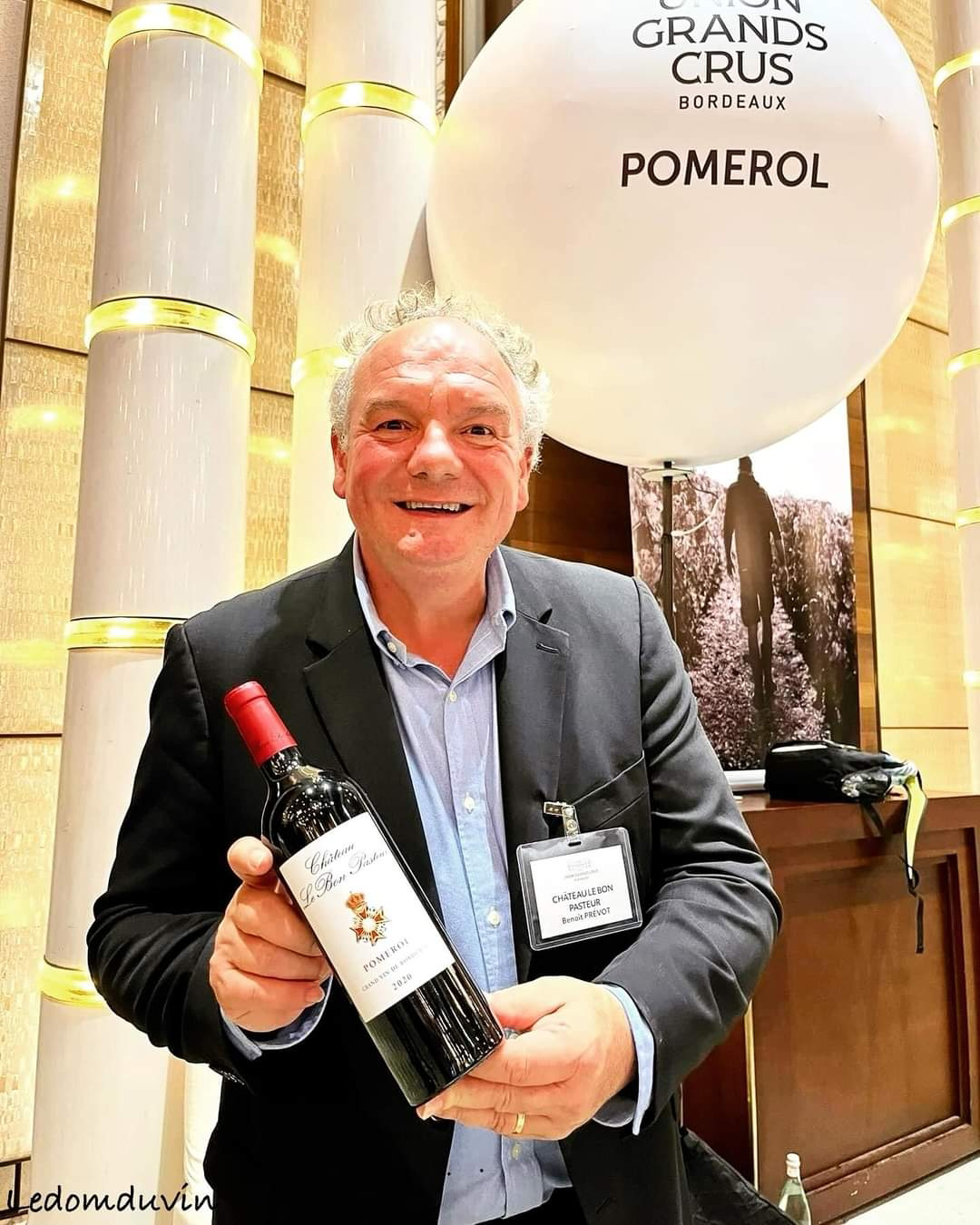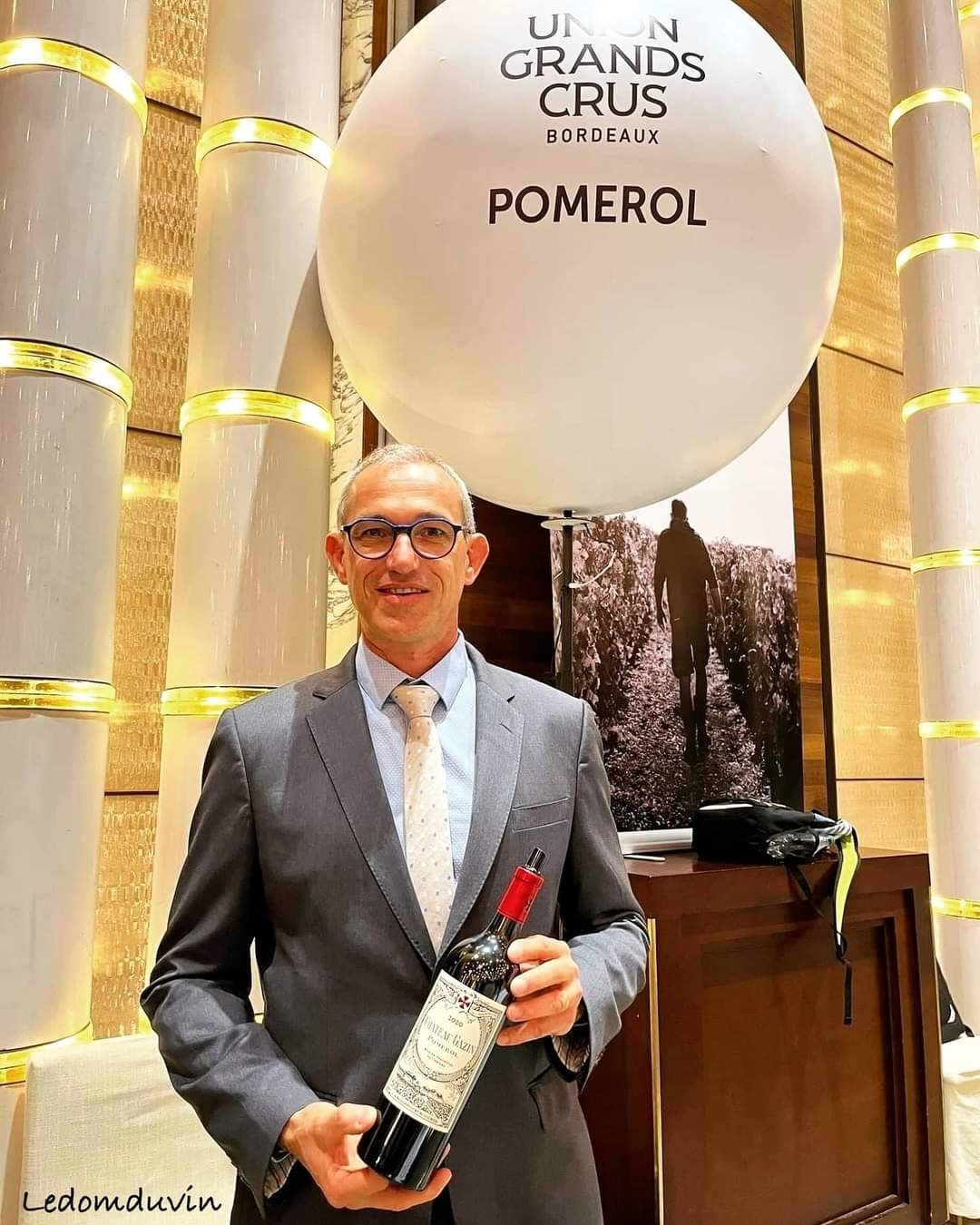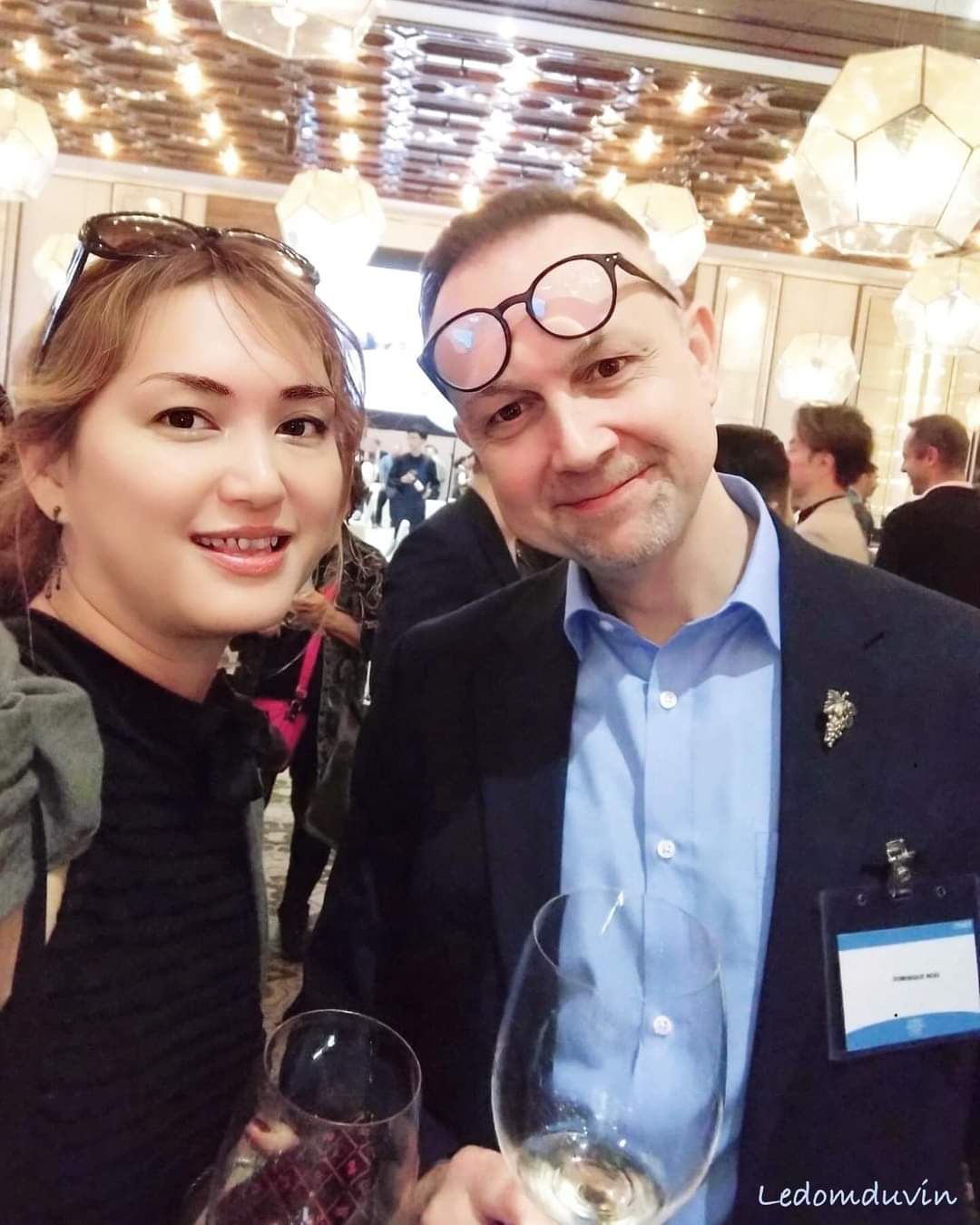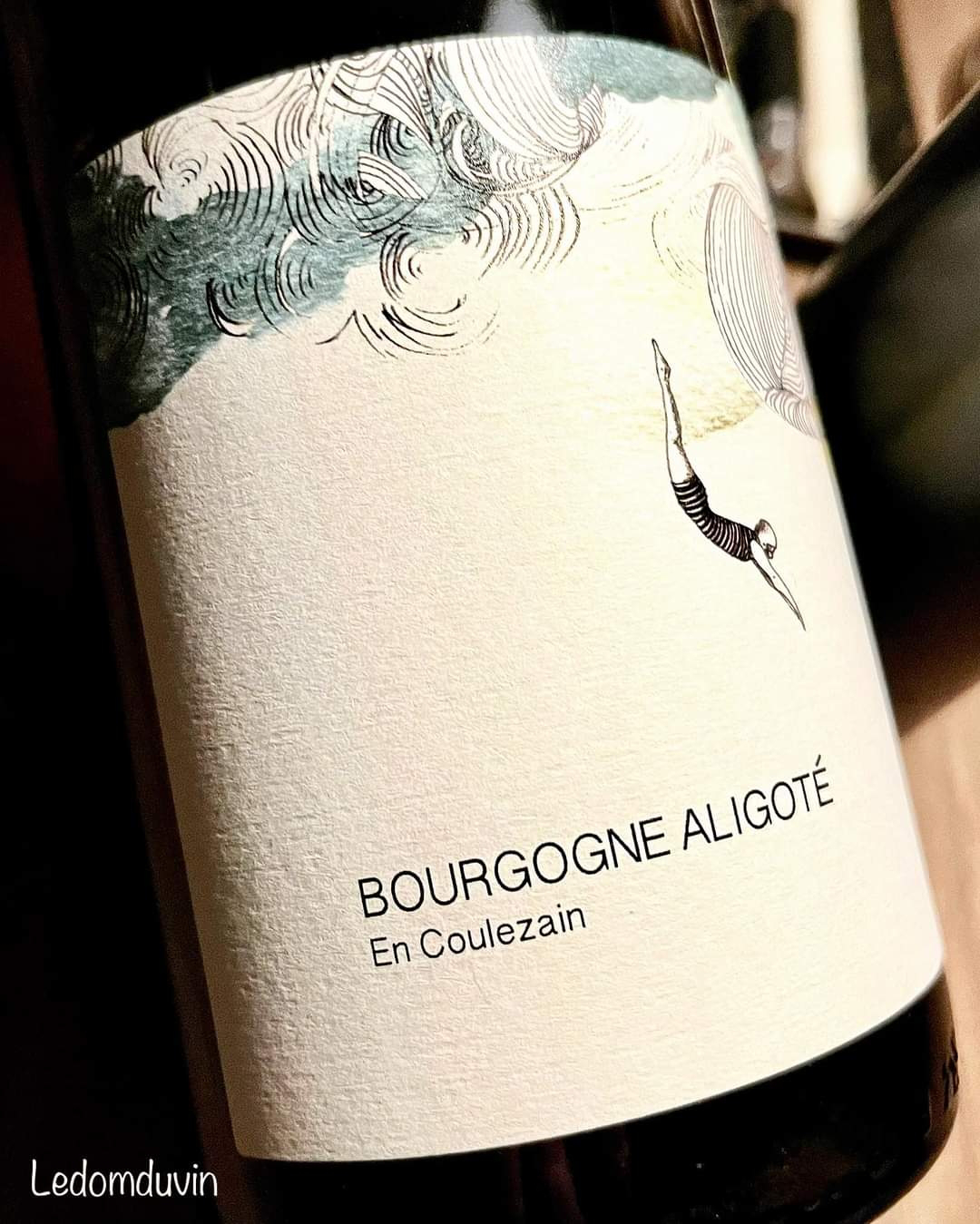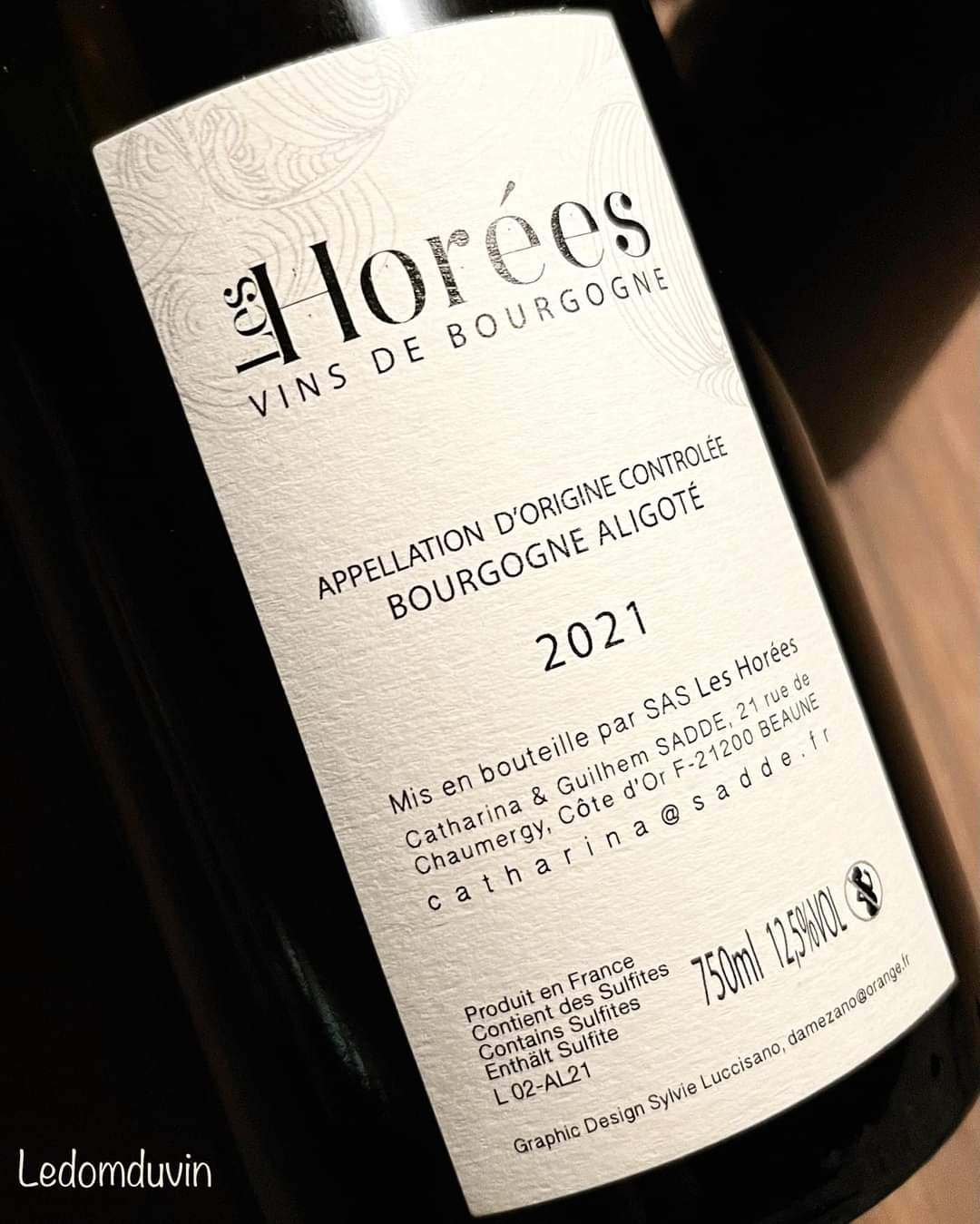O.V.N.I: Objet Vineux Non Identifié -
Les Horées Bourgogne Aligoté
"En Coulezain" 2021
The good thing about wine is that there is always something new to discover, taste, and learn about.
This is an expensive "Bourgogne Aligoté" from a producer I had never heard of before (yes, that happens!). So, I researched it, and this is what I have found.
Catharina Sadde, one of Burgundy's rising stars, crafted this wine.
Before settling in Burgundy, Catharina studied at Geisenheim, one of Germany's most renowned wine schools. She started her career as a chef in several Michelin-starred restaurants in Germany before embarking on her wine adventure.
In France, she completed her training and gained skills and experience with some of the most illustrious producers of Burgundy, including Domaine de la Romanée-Conti, Comte Armand, Cecile Tremblay, Marquis d’Angerville... (now that's impressive).
After completing her training, this talented winemaker, with an inspiring résumé, created "Les Horées" in 2018, accompanied by her husband, Guilhem. "Les Horées" refers to the Greek celebrations that honor the seasons.
Catharina's first vintage 2019 put her on the radar of burgundy lovers. The tiny Domaine has 1.3 ha of vineyards in Pommard, Volnay, and Beaune, planted with Chardonnay, Aligoté, Pinot Noir, and Gamay. She also makes some cuvées from purchased grapes.
Following Biodynamic principles, everything in the vineyard is done by hand with great care, including horse plowing and no addition of sulfur. In the cellar, vinification without added sulfites, only natural yeasts in both barrels and stainless-steel tanks. Inclusion of the whole cluster for the Reds. A small amount of sulfur is added before bottling.
This "Bourgogne Aligoté - En Coulezain" is mainly crafted from 30 years old vines in Volnay (representing about 4 barrels) and a small amount of very old vines (about 100 years) in Pommard, owned by Catharina. Tiny production.
Winemaking involves 1/3 de-stemmed grapes and 2/3 whole clusters pressed in a basket press. Skin-contact for the de-stemmed grapes for 5 days in 50-liter crates, while the whole clusters are directly pressed. Fermentation initiated using indigenous yeast, and no sulphur added until after malolactic fermentation. Aged for six months in 350-liter old oak barrels.
Now you know as much as I do! I can't wait to see if it is worth the hype and the price (around 250-300 Euros)!
Cheers! Santé!
Dom
@ledomduvin #ledomduvin @les_horees #leshorees #vin #wine #vino #wein #bourgognealigote #burgundy #ovni #objetvineuxnonidentifie #sommelier #sommlife
Unless stated otherwise, all rights reserved ©LeDomduVin 2023, on all the contents above including, but not limited to, photos, pictures, drawings, illustrations, collages, visuals, maps, memes, posts, texts, writings, quotes, notes, tasting notes, descriptions, wine descriptions, definitions, recipes, graphs, tables, and even music and video (when and where applicable).



